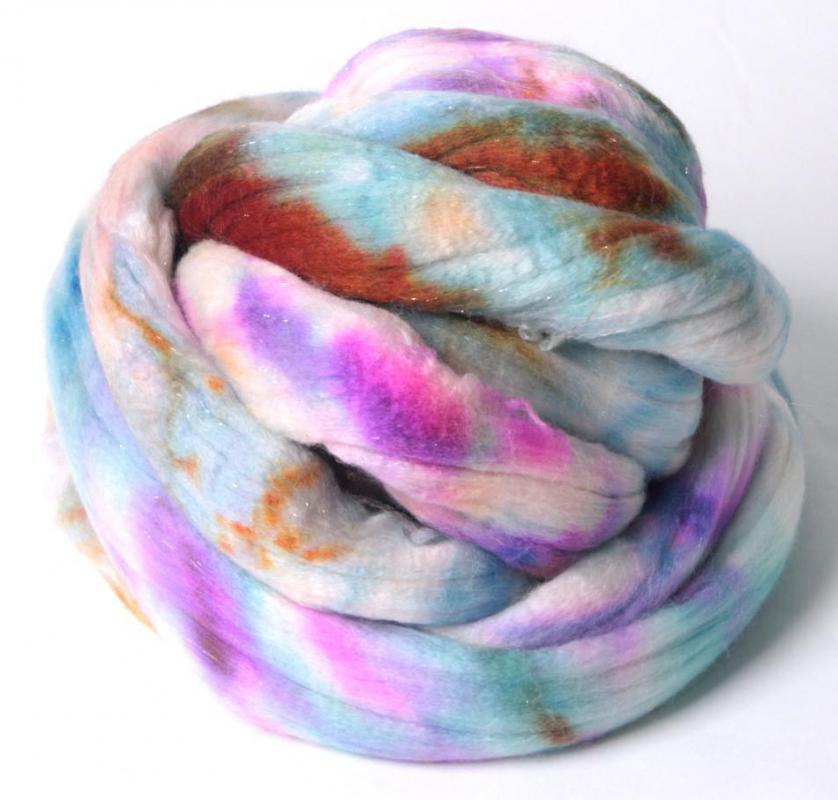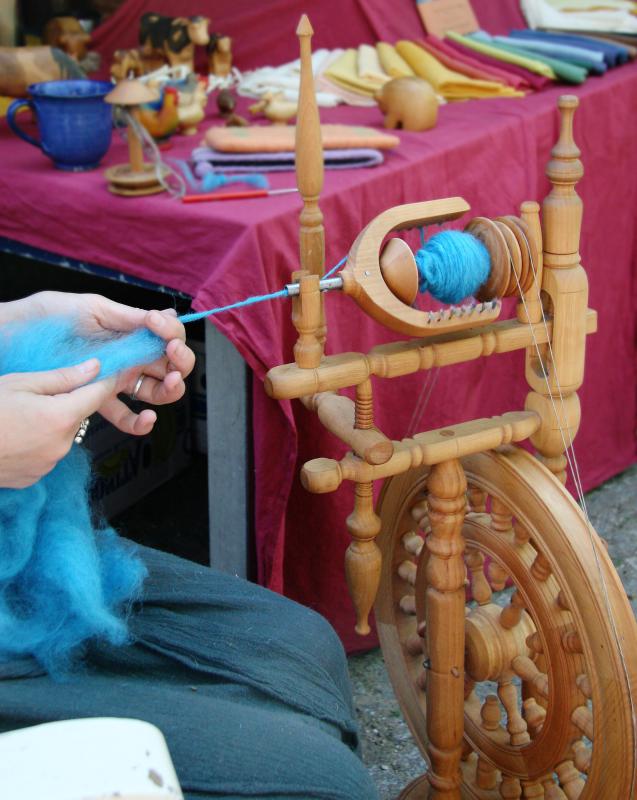At HomeQuestionsAnswered, we're committed to delivering accurate, trustworthy information. Our expert-authored content is rigorously fact-checked and sourced from credible authorities. Discover how we uphold the highest standards in providing you with reliable knowledge.
What is Wool Roving?
A wool roving is a piece of wool which has been combed, drawn into a clump, and then twisted slightly to hold the fibers together and to prepare them for spinning. Spinners who start with their own raw yarns can create rovings themselves, and they are also available commercially from companies which specialize in providing tools and supplies for spinners. In addition to being made from wool, rovings can also be made from cotton, silk, and other fibers which are used in the production of textiles.
To prepare a wool roving, the wool is combed to remove impurities, washed, carded to pull the fibers so that they are oriented in the same direction, and then gently twisted. Rovings can also be dyed; when yarn is dyed before it is spun, the color is deeper, and penetrates more fully. Rovings are generally around the length of a hand, and sometimes longer. The wool roving may also be looped back on itself to create a compact pile for storage.

When a wool roving is prepared, but not twisted, it is known as a sliver. Flattened rovings are known as batting. While rovings are generally used for spinning, they also have other uses; batting, for example, can be used to stuff things, and rovings can also be used to pad animal beds, or for various craft projects. Generally, rovings are very soft and fine, and they have a lofty, springy texture.

Some crafters like to spin their own yarns, but not to process wool from scratch, which is why it is possible to purchase prepared rovings from some wool companies. The advantage of homespun yarn is that the spinner can control the color, composition, width, and texture of the yarn. Some people also simply enjoy the spinning process, and the look of homespun yarn, which can vary from very smooth and even to more coarse and rough. It is also sometimes cheaper to spin one's own yarn.

People who want to learn to spin wool can sometimes take classes at colleges or art studios with textile departments, and it is also possible to apprentice with a skilled spinner. Learning to spin takes time, patience, and practice, but it can open up a whole new world of crafting for people who work with yarns. Many spinners learn the entire process for handling wool, from shearing to spinning finished yarn, although they may opt to start with a wool roving when they spin on their own, because wool processing is time consuming.
AS FEATURED ON:
AS FEATURED ON:













Discussion Comments
I am working on figure of a gnome. I'm to use the roving wool for the whiskers. How do I crochet them in?
There's a lot of spinning groups out there that will help you on your quest to spin. I would say to drop by a local county fair or craft fair, and either find somebody sitting at a wheel or find somebody who's knitting and ask them. It's been my experience that there's at least one person in every knitting group/club/circle that can/does spin their own wool, so that may be a good place to start.
googlefanz, spinning is not hard. My first time came out a bit uneven but that makes the yarn look cooler. Top whirl drop spindles are the easiest and cheapest. There are a lot of online tutorials. Happy spinning.
Do you have any tips about washing wool roving? A friend of mine who keeps sheep recently gave me some nice raw wool roving, but it's kind of smelly and has got that oily sheep residue on it, so I'd really like to wash it before I start to use it.
I'm hoping to make a mohair/wool top out of the yarn once I get it spun, but I'd really rather not start to work with it before it's clean. It's that smelly!
So are there any good tips for washing wool fleece roving? Should I just wash it like I would a wool sweater, or can I throw them in the washing machine, or what?
Does anybody reading this have any tips for me?
I have a bit of a dilemma -- somebody recently gave me some hand dyed wool roving, apparently thinking that I spin, when really I can only knit.
I'd hate to use it for batting since it's so pretty, but I don't know of anybody near me that could spin the wool for me.
Do you think that I should just try to spin the wool myself? My knitting store sells some hand spindles, so I could get the equipment, but I'm worried about how hard it would be.
I'd hate to mess up the yarn just because I was a beginner at spinning.
So what do you think? Should I try to spin the yarn and then use it in my wool crafts, or should I hang onto it and try to find someone else to do it for me?
I love working with wool roving much better than any other kind of spinning fiber. I actually keep my own sheep, so there's certainly enough raw wool laying around!
I really think that wool roving is actually the best thing you can use for wool crafts, whether that's a wool sweater or if you just want some needle felting wool.
Something about the connection that you get with the wool going through your fingers makes the end project that much more special, since you know where it came from and had an active hand in its creation.
I would definitely recommend any crafty-type people to try using raw wool roving for your projects sometime -- it's a pretty addictive experience!
Post your comments